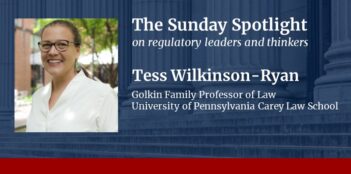
A tax break for charitable donations of land needs updating to achieve its purpose of cost-effective conservation.
When they first codified a tax break for property donations for conservation purposes, members of the U.S. Congress did not foresee that the provision would enable developers such as President Donald J. Trump to receive tens of millions of dollars in tax breaks from golf courses and luxury properties.
To avoid abuses of this conservation tax break and promote legitimate conservation efforts, the tax code needs updating, argues attorney Andrew Flynn in a recent article.
Currently, the tax code allows for a special deduction for conservation easements. These easements are legal agreements between a property owner and a charity or government entity that prevent future development. Beginning in 1976, Congress added a financial incentive to the federal tax code for property owners to set aside land via conservation easements.
Since Congress first passed the conservation tax deduction, the use of this deduction has exploded. The land covered by conservation easements claimed for deductions reached a cumulative 27 million acres in 2017.
As the use of the deduction has grown, so has its impact on tax revenues. One estimate pegged the cost of the conservation easement deduction for the U.S. Department of the Treasury at billions of dollars per year in forgone revenue. This has approximated in a single year “the entire budgets of the National Park Service, Fish and Wildlife Service, and Bureau of Land Management that year.”
Although the deduction has promoted conservation efforts in extraordinary places such as Big Sur State Park in California, some scholars question whether the conservation value of the protected land justifies the forgone revenue.
Two problems result from the current deduction provision, according to Flynn. One problem arises when taxpayers focus on taking advantage of the deduction from a tax perspective rather than a conservation perspective. Analyses of easement “donations” show that they tend to be concentrated in wealthy enclaves, such as Martha’s Vineyard, Massachusetts. Flynn reasons that this pattern indicates that high net-worth taxpayers may be using the deduction simply for estate planning purposes rather than conservation that serves the public interest.
In fact, given the personal stake many taxpayers have in their property, the deduction may not lead to land management practices that differ from a world without the deduction. The frequency of these situations raises the question of whether tax policy should be used to achieve a result that would be reached even in its absence.
A second problem occurs when taxpayers attempt to use the deduction fraudulently. Flynn explains how some taxpayers abuse the deduction by working with developers, charities, and appraisers—all in on the take—to inflate the value of land that is at little risk of development to take advantage of the deductions.
Although the Internal Revenue Service (IRS) and the U.S. Department of Justice recently received the first guilty plea in a case against one of these fraudulent schemes and are pursuing others, the prevalence of these tax avoidance schemes demonstrates the need to reform the deduction, according to Flynn.
Flynn argues that these problems result chiefly from the vagueness of the statutory language that accepts deductions where easements have a “conservation purpose.” In fact, Flynn notes that even before Congress passed the legislation creating the deduction, tax officials worried about how the “unnecessary vagueness” in the legislation “would result in deductions without adequate public benefit.”
To deal with these problems, Flynn offers four solutions.
First, Flynn proposes revising the language in the tax code to require a more direct link between conservation easements and existing government conservation policies. In addition to this linking requirement, Flynn advises adding language to the statute to require all easements to create “a significant public benefit.” Flynn argues that these statutory revisions would result in more successful conservation.
Second, Flynn suggests that Congress could create designated geographic areas where easements have a presumption of validity. This kind of provision could be modeled off of the “opportunity zones” from the 2017 tax bill that provide tax credits for development investments made in designated areas.
Third, Flynn advocates creating an “Easement Advisory Panel” to validate easements as creating “a significant public benefit.” Flynn models this proposal on the IRS Art Advisory Panel, which reviews “charitable contributions of artwork” to ensure that art receives a fair market and minimizes fraud and evasion.
Finally, Flynn recommends greater public disclosure of easement information. He argues that disclosure would lead to better oversight from journalists and the donors who contribute to land trusts.
Flynn expresses confidence that these four proposed remedies to the conservation easement deduction can help the deduction attain its aims “without overly burdening taxpayers.”



